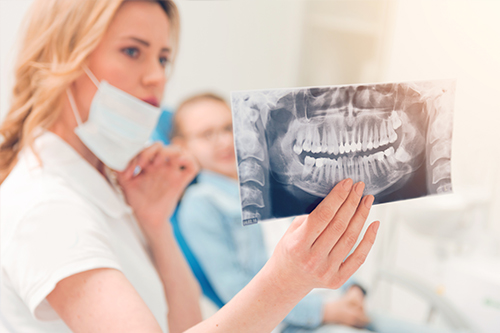When a Tooth Problem Becomes an Urgent Matter
Dental problems can escalate quickly — what starts as a dull ache or a small chip can become a serious threat to comfort, function, and long-term oral health. If you or a family member are experiencing sudden pain, swelling, or trauma to the mouth, prompt evaluation helps preserve teeth and prevent complications. Our approach prioritizes fast assessment, clear explanations, and decisive treatment so patients leave with pain under control and a plan to restore oral health.
At West Chicago Smiles, we understand that emergencies are stressful. Our team focuses on immediate comfort and practical next steps, whether the need is relief from pain, stabilization of a damaged tooth, or care for a soft-tissue injury. Quick action not only eases suffering but often enables dentists to save natural tooth structure that could otherwise be lost to infection or further damage.
Not every dental concern requires the same level of urgency, but all unexpected oral symptoms deserve attention. If you notice severe or worsening pain, visible damage, persistent bleeding, or sudden swelling, it’s appropriate to seek dental care right away. Early assessment allows us to prioritize treatments that avert more extensive procedures later on.
Typical Dental Emergencies and How We Address Them
Dental emergencies cover a wide range of problems, from intense toothaches to injuries caused by accidents. Our emergency services are designed to diagnose the root cause quickly — whether that’s decay reaching the nerve, a fractured tooth, an infection, or a dislodged restoration — and to recommend a clear, practical plan for relief and repair. We treat each case based on severity, patient comfort, and long-term outcome.
Common conditions we routinely manage include toothaches, chipped or broken teeth, and sudden loosening of crowns or fillings. We also see dental infections and abscesses that require drainage and antibiotics, problematic wisdom teeth that cause acute pain, and injuries to soft tissues such as lacerations or swelling. Prompt attention to these problems reduces the risk of spreading infection and preserves oral function.
Below are examples of urgent issues our team evaluates and treats:
- Severe tooth pain or persistent, unexplained oral pain
- Chipped, cracked, or fractured teeth
- Dental abscesses or signs of infection with swelling
- Loose, broken, or lost fillings and crowns
- Dislodged or fractured dental work and restorations
- Problems from wisdom teeth, including impaction and infection
- Loose, fractured, or avulsed (knocked-out) teeth
- Swollen, bleeding, or painful gums and soft-tissue injuries
- Unusual bumps, sores, or unexplained oral lesions
What Happens During an Emergency Appointment
An emergency visit begins with a focused intake to understand the problem, followed by a targeted exam and any necessary imaging to clarify what’s happening beneath the surface. We prioritize relieving intense pain and controlling infection or bleeding as immediate goals. From the first minutes of your visit, we’ll communicate the findings and outline treatment options so you aren’t left wondering what comes next.
Triage often involves short-term measures — such as temporary fillings, protective splints, or drainage — to stabilize the area while we plan definitive care. If a tooth can be repaired, we will discuss conservative options like bonding, a new restoration, or a crown. When the damage extends to the dental nerve, root canal therapy may be recommended to save the tooth. In cases where a tooth cannot be preserved, extraction may be necessary to protect surrounding tissues.
Throughout treatment we focus on comfort, using gentle techniques and appropriate pain control. Our team will explain why a particular intervention is recommended, the expected healing timeline, and any follow-up care needed to restore full function and appearance. Clear communication helps patients feel informed and confident in their care plan.
Immediate Steps You Can Take Before Reaching the Office
There are simple, effective measures you can use at home to reduce discomfort and limit further harm while you arrange dental care. Rinse gently with warm salt water to reduce bacteria and soothe soft tissues. For swelling, an ice pack applied to the outside of the cheek in short intervals can help. If a tooth has been knocked out, handle it by the crown (not the root) and, if possible, keep it moist — either placed back into the socket or stored in milk or saline — while you travel to the dentist.
Avoid using sharp instruments or hard probing to reposition teeth or restorations yourself. For broken fillings or sharp tooth fragments, temporarily cover jagged edges with soft dental wax or sugarless gum until professional treatment is available. Over-the-counter pain relievers and topical anesthetic gels can offer temporary relief when used as directed, but they do not replace timely clinical care.
Seek emergency medical attention instead of dental care if there is any concern for life-threatening conditions — uncontrolled bleeding, difficulty breathing or swallowing, or major facial trauma. For most dental emergencies, however, the dental office is equipped to address pain, control infection, and begin restorative care that preserves oral health.
Restorative Options After an Emergency: Protecting Long-Term Oral Health
Once immediate needs are managed, the focus shifts to long-term restoration. Many emergency cases can be resolved with conservative repairs such as fillings or bonding to rebuild tooth form and function. When a larger portion of the tooth is compromised, a crown can restore strength and protect the remaining structure. If the pulp (nerve) is affected, root canal therapy often allows the natural tooth to remain in place and continue functioning comfortably.
When a tooth must be removed, modern restorative dentistry provides predictable ways to replace it. Options include fixed bridges, removable partial dentures, or dental implants to reestablish chewing ability and smile aesthetics. Each choice has advantages depending on the location of the tooth, bone support, and the patient’s oral health goals; we help patients weigh these factors and choose a plan that fits their needs.
Our team takes a conservative, evidence-based approach to restoring smiles after an emergency, emphasizing long-term stability and comfort. We coordinate follow-up care and any specialist referrals when necessary to ensure that recovery proceeds smoothly and that the chosen restoration supports a healthy, functional bite for years to come.
In an unexpected dental crisis, prompt, skilled care makes a meaningful difference in outcomes. If you need urgent attention or have concerns about a sudden oral health problem, contact us for more information.





